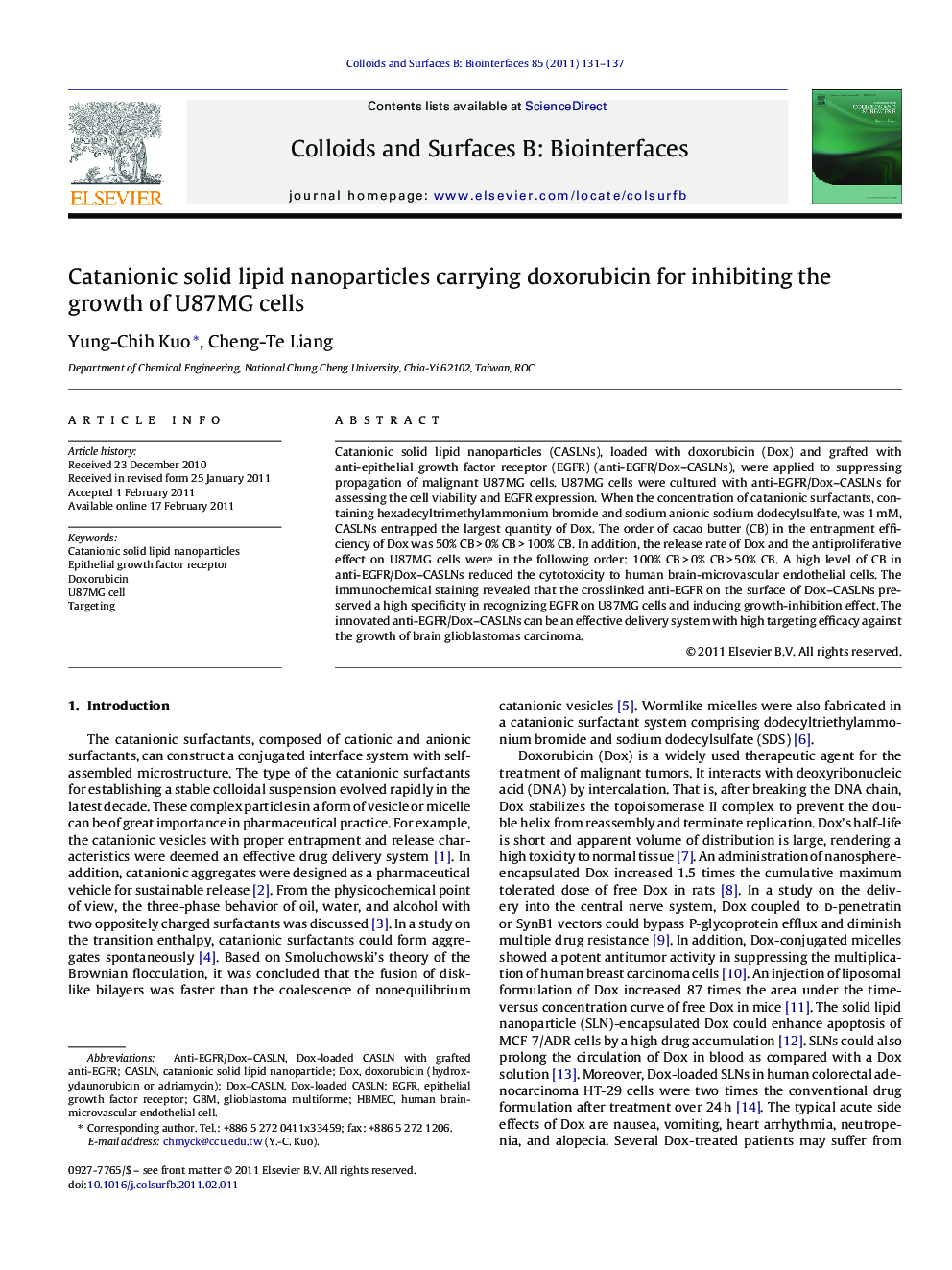| کد مقاله | کد نشریه | سال انتشار | مقاله انگلیسی | نسخه تمام متن |
|---|---|---|---|---|
| 601236 | 879935 | 2011 | 7 صفحه PDF | دانلود رایگان |

Catanionic solid lipid nanoparticles (CASLNs), loaded with doxorubicin (Dox) and grafted with anti-epithelial growth factor receptor (EGFR) (anti-EGFR/Dox–CASLNs), were applied to suppressing propagation of malignant U87MG cells. U87MG cells were cultured with anti-EGFR/Dox–CASLNs for assessing the cell viability and EGFR expression. When the concentration of catanionic surfactants, containing hexadecyltrimethylammonium bromide and sodium anionic sodium dodecylsulfate, was 1 mM, CASLNs entrapped the largest quantity of Dox. The order of cacao butter (CB) in the entrapment efficiency of Dox was 50% CB > 0% CB > 100% CB. In addition, the release rate of Dox and the antiproliferative effect on U87MG cells were in the following order: 100% CB > 0% CB > 50% CB. A high level of CB in anti-EGFR/Dox–CASLNs reduced the cytotoxicity to human brain-microvascular endothelial cells. The immunochemical staining revealed that the crosslinked anti-EGFR on the surface of Dox–CASLNs preserved a high specificity in recognizing EGFR on U87MG cells and inducing growth-inhibition effect. The innovated anti-EGFR/Dox–CASLNs can be an effective delivery system with high targeting efficacy against the growth of brain glioblastomas carcinoma.
Figure optionsDownload as PowerPoint slideResearch highlights
► CASLNs encapsulate the maximal quantity of Dox at 1 mM of surfactants.
► Release rate of Dox from Dox–CASLNs follows the order: 100% CB > 0% CB > 50% CB. The same order is also valid for antiproliferative effect on malignant U87MG cells.
► CB in Dox–CASLNs reduces the cytotoxicity to human brain-microvascular endothelial cells.
► Anti-EGFR on Dox–CASLNs preserves a high specificity in recognizing U87MG cells.
Journal: Colloids and Surfaces B: Biointerfaces - Volume 85, Issue 2, 1 July 2011, Pages 131–137